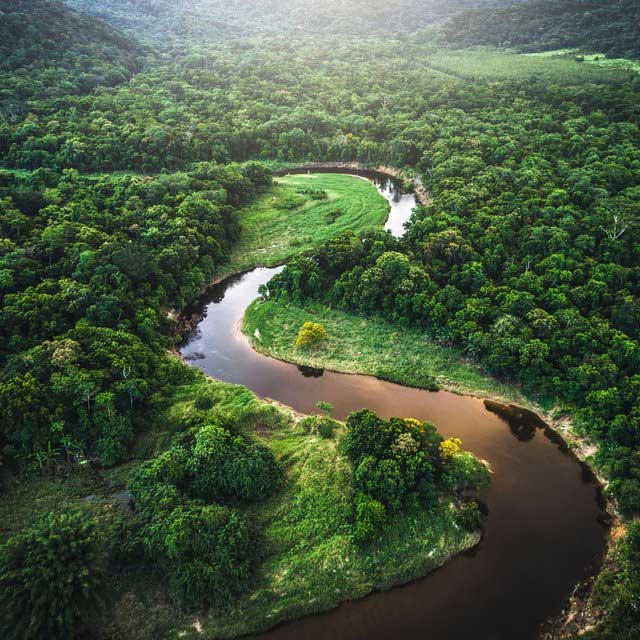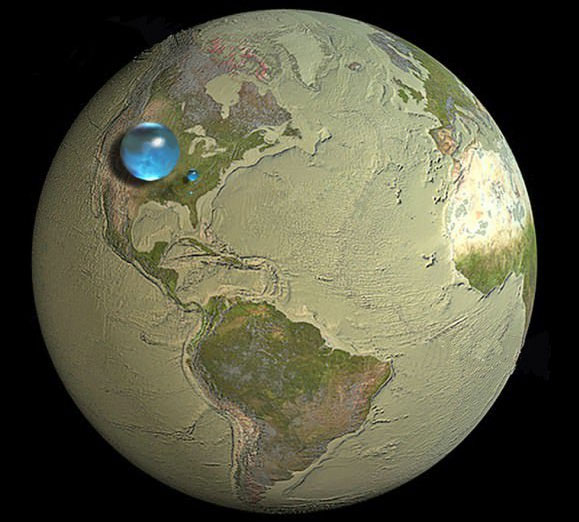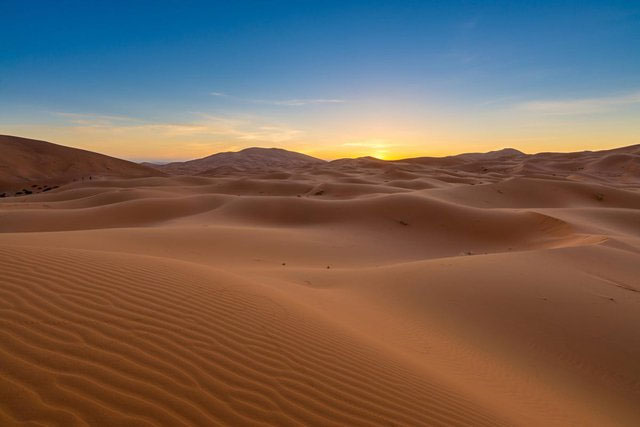Around the world, about 20% are sandy deserts or deserts, varying from just 2% in North America to 30% in Australia and more than 45% in Central Asia. Since deserts and deserts both have harsh climatic conditions and limited water resources, their vast areas are now being wasted. Many people think that the appearance of deserts and deserts is unnecessary because many countries around the world are currently facing a serious shortage of land. But, scientists claim that if the Earth did not have a desert, humanity would regret it. Why?
1. Influencing the development of forests
Hongbin Yu – atmospheric science expert at Goddard Space Center, USA, said that the life of the Amazon forest depends greatly on the Sahara desert . This has been confirmed through data collected from NASA’s Calipso satellite when measuring the amount of sand moving from the Sahara desert in Africa to the Amazon jungle in South America.
The data the team collected from 2007 to 2013 shows that, each year, about 182 million tons of dust move from the Sahara. Of which, about 132 million tons are suspended in the air, 27.7 million tons reach the Amazon forest and 43 million tons drift into the Caribbean Sea. The volume of dust can vary depending on the weather each year.

The Sahara Desert is closely linked to the Amazon forest. (Photo: Quora)
After calculating the amount of dust moving in 3D space, they determined more phosphorus in the dust moving to the Amazon forest. Every year, about 22,000 tons of phosphorus fly from the Sahara to the Amazon , equivalent to the amount of nutrients lost by forests by rain and flooding.
Phosphorus is a mineral that is essential for plant growth. Because of the great density of trees in the Amazon, they often have to compete for nutrients. Thus, dust clouds from the Sahara are a much-needed source of nutrients for the plants of the Amazon.
2. Deserts are the world’s carbon sink
We all know that O 2 and CO 2 are both important gaseous compounds for the atmosphere. But when the amount of carbon dioxide exceeds the permissible level, it will cause a greenhouse effect that has a negative impact on the Earth’s biological system.
In a paper published in the journal Science Advances, a team from the Institute of Microbiology, part of the Czech Academy of Sciences, discovered a species of desert bacteria that can “eat” carbon dioxide and “breathe” out . oxygen . This microorganism is called Gemmatimonas phototrophica and it is found in the Gobi desert.
Their study revealed the detailed structure of the photosynthetic complex consisting of 178 pigments bound to more than 80 protein subunits of this microorganism. The light-collecting subunits are arranged in two concentric rings around the reaction center. In it, the pigments in the outer ring are more energetic than the pigments in the center and are arranged like a funnel. The energy absorbed by the pigments at the periphery of this complex is transferred to the center of the complex where it is converted into metabolic energy.

Many of Earth’s deserts absorb large amounts of Earth’s carbon dioxide. (Photo: Quora)
Another study conducted by a team of experts from the Xinjiang Department of Ecology and Geography of the Chinese Academy of Sciences accidentally discovered a large amount of carbon dioxide disappeared around the Tarim Basin area of Sa Pa. desert. Then they found a huge ocean lying under the Taklamakan desert.
To arrive at this result, the team collected deep groundwater samples from nearly 200 different locations in the Taklamakan Desert. They then measured the amount of carbon dioxide in each water sample and discovered their concentrations were unusually high. According to the team’s calculations, the Tarim Basin must absorb up to more than 220 billion kilograms of carbon dioxide (about 0.0005% of Earth’s carbon dioxide) each year. This shows that this area can be considered as a carbon sink. Although scientists have never before recognized a desert area as a carbon sink, and this discovery has changed their view of Earth’s deserts.
3. Abundant resources
In addition, the deserts have significant mineral resources . Geological processes in desert climates can concentrate the minerals in them into valuable deposits. Groundwater beneath the desert can extract ore minerals and accumulate them, following the groundwater table to form a concentrated form. Likewise, desert evaporation tends to concentrate minerals in desert lakes forming a variety of mineral deposits . The result of this process is mineral deposits such as copper in Chile, Peru and Iran, and iron and uranium in Australia. Not only that, several large oil fields have been discovered under the desert of Saudi Arabia.

Deserts are also considered the world’s source of minerals, solar energy, etc. (Photo: Quora)
In addition, deserts are also considered important sources of solar energy , because they have little cloud cover. Many solar power plants have been successfully built in the deserts. Professor David Faiman of Ben-Gurion University has shown that with current technology it is possible to supply all of the world’s electricity needs from just 10% of the solar energy collected from the Sahara desert. Thus, the source of solar energy from the deserts supplying the Earth is very large.
From the above 3 factors, it can be seen that deserts and deserts are an important component of the general ecosystem of the Earth. If all deserts were to disappear, the Earth’s biota would be severely impacted. And, people are the first affected factor.
